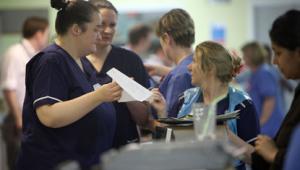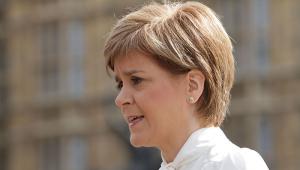The government has signalled that – at long last – the public sector pay cap may be coming to an end.
When the coalition imposed a two-year pay freeze in the public sector in 2011/12, the then chancellor argued that public sector workers "did not cause the recession – but they must share the burden as we pay to clean it up".
The two-year freeze was followed by five years of increases effectively capped at 1%.
The government had planned to maintain this cap until 2020, an unprecedented nine years of pay restraint.
Just weeks ago, the current chancellor in the face of growing pressure from public sector unions and growing unease from his own MPs, called on the government to "hold [its] nerve", and reportedly said that public sector workers were "overpaid". Yet it seems that now he and the prime minister are set to change course.
This is due to growing concerns over the impact of the public sector pay cap.
Most obviously, the pay cap has had an impact on millions of public sector workers, on their living standards, and on their families. Successive years of below inflation pay rises – real terms pay cuts – have eroded public sector pay.
Analysis by TUC shows that a band 5 nurse was earning 11.9% less in real terms in 2016 than a band 5 nurse in 2010, equivalent to a cumulative real terms loss of £3,842. The real terms loss for a teacher outside of London was £3,858 for the same period, with a fire fighter losing £3,446.
Beyond the impact on individual workers and their families, the pay cap has also had a significant effect on economic demand. The cumulative impact of large real terms pay cuts on millions of public sector workers has constrained spending, sucking demand out of local economies.
The pay cap has had a fiscal impact too, contributing to lower revenues from income taxes and higher spending on in work benefits for those on low pay. Between 2010/11 and 2015/16, the number of households in poverty and with someone in work, increased by 1 million.
The pay cap has had a significant negative impact on public services too.
As pay in the NHS has been squeezed, satisfaction with pay has fallen, and challenges with recruitment and retention have grown.
The number of unfilled vacancies for nurses in the NHS has doubled in the last three years to 40,000. In the face of these challenges, NHS Trusts have increasingly had to turn to agency staff. The bill for agency staff rocketed to £3.6 billion in 2015/16, forcing the government to introduce a cap in that year.
The NHS is not alone; in other public services, the ongoing pay squeeze is leading to growing discontent and increasing challenges with recruitment and retention.
So there are costs to the public sector pay cap. Costs not just to the workers affected and their families, but to local economies and to public services themselves.
In June we found out that there are political costs too. The prime minister discovered that despite her huge poll lead, governments do not tend to do well at the ballot box when pay is falling.
While the government has signalled the easing of the pay cap, there remain some important questions.
First, the government has suggested that the pay cap will be lifted over two years. So with inflation accelerating, which public sector workers will have to face another 18 months of significant real terms pay cuts?
Second, how will easing the pay squeeze work in the majority of the public sector not covered by pay review bodies? Take local government; if the government is to end the cap here too, how will it ensure that hard-pressed councils are able to fund these necessary increases in pay?
Third, how will this be paid for? The government had accounted for a further two years of the pay cap. This u-turn will not come cheap. So where will it find this funding from? Will it be from other spending cuts, from more borrowing, or from tax increases?
Fourth, while lifting the pay cap is welcome, public sector workers will want to know whether and when the government intends to reverse the real terms pay cuts we have seen in recent years, or if lower public sector pay will be the new normal.
This will tell us much about this government; was the pay freeze and subsequent pay cap a temporary, emergency and regrettable measure to control spending, or did they see it – at least in part – as a necessary measure to correct for supposedly overly generous public sector salaries?
So, is the government planning to increase pay significantly above the rate of inflation in order to restore some of this lost ground, or will we see public sector pay bumping along at inflation or just above? We may find out at the autumn Budget [expected to be at the end of November].
But if it’s the latter, we will continue to see hundreds of thousands of public sector workers struggling to get by, and we’ll continue to see recruitment and retention pressures on public services.
Joe Dromey, senior research fellow at the Institute of Public Policy Research




















